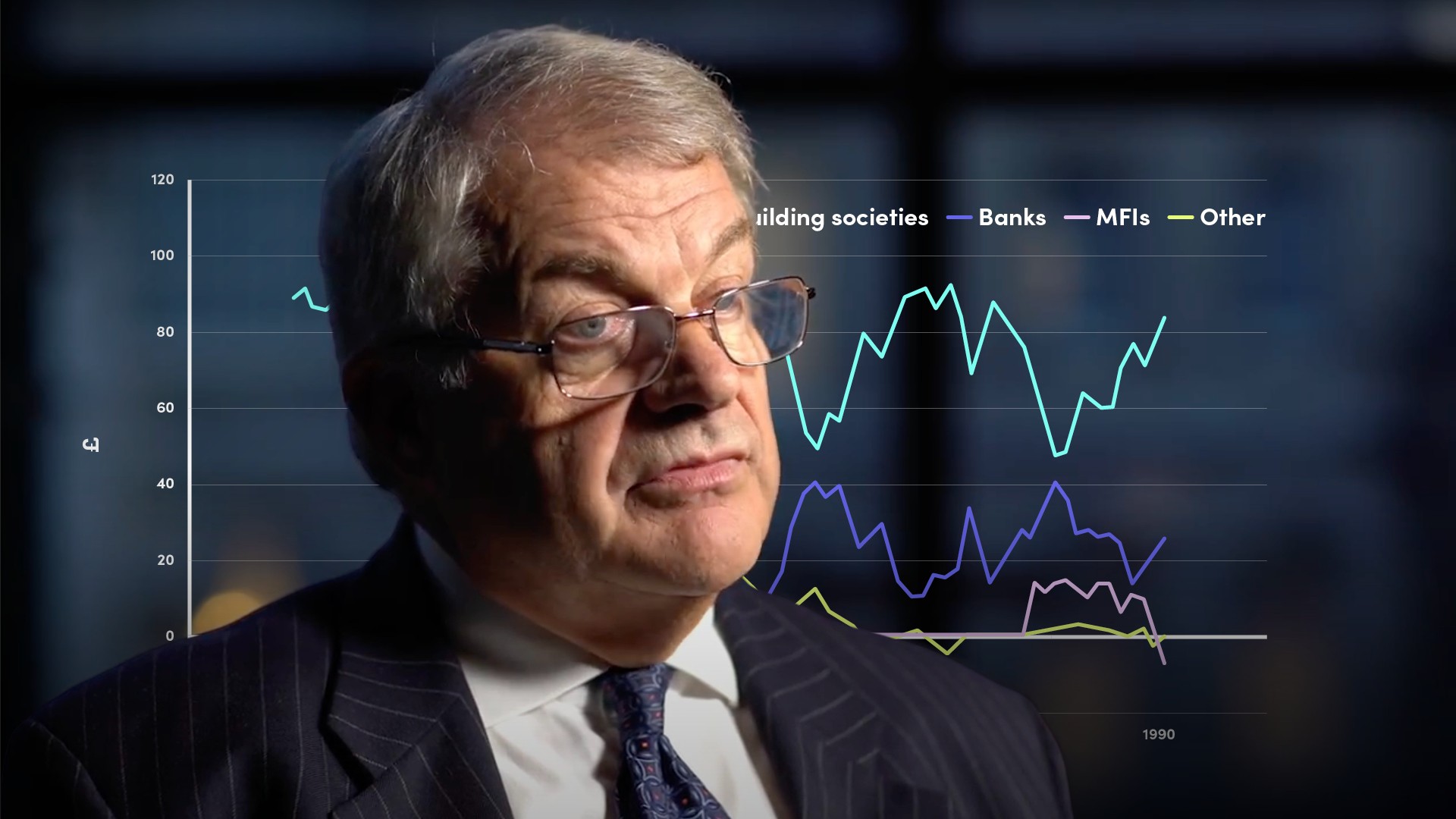
The Building Society Industry Today

Sir Mark Boleat
40 years: Executive leadership & banking
In the previous video of the series, Sir Mark Boleat covered the history of the building societies. In this video, he covers the legislative framework and the structure of the industry.
In the previous video of the series, Sir Mark Boleat covered the history of the building societies. In this video, he covers the legislative framework and the structure of the industry.
Subscribe to watch
Access this and all of the content on our platform by signing up for a 7-day free trial.

The Building Society Industry Today
14 mins 37 secs
Key learning objectives:
Identify the legislative framework today
Understand the role of building societies today
Understand what the building society market looks like today
Overview:
The role of building societies today has changed dramatically - they are in effect specialist savings banks. Similarly, the BSA has slimmed down and is a great deal less influential than UK Finance. The 1986 Building Societies Act still remains as the legislation governing securities today.
Subscribe to watch
Access this and all of the content on our platform by signing up for a 7-day free trial.
What are the four principal features of the 1997 Building Societies Act?
- Removed the previous prescriptive powers regime, replacing it with a permissive regime with appropriately revised balance sheet nature limits, thus increasing the commercial freedom of societies
- Enhanced the powers of control of the Building Societies Commission
- Enhanced the accountability of the building societies’ boards to their members
- Changed the provisions on conversion to company status
How did the Financial Services and Markets Act (2000) integrate building societies into the wider financial system?
- Most of the functions of the Building Societies Commission were moved to the Financial Services Authority. In 2012, this was replaced by the FCA and the PRA
- The previous different statutory authorisation criteria were replaced by a single statutory, with broadly harmonised prudential and regulatory requirements
- A single financial services compensation scheme and a single financial ombudsman scheme were established
What amendments have been made to the 1986 Building Societies Act?
- Section 5(1) has been amended such that, building societies retain their mutual status. Only shareholders can be members. The members alone have the right to elect directors, to vote at AGMs and to approve mergers or conversion to company status
- Section 6 provides that at least 75% of the business assets of a building society must be loans fully secured on residential property
- Section 7 provides that at least 50% of the funds of a building society must be raised in the form of shares held by individual members of the society
- Section 9 imposes restrictions on the powers of a building society. In relation to acting as a labour market maker in securities, commodities or currencies; trading in commodities or currencies; and entering into transactions involving derivatives
What does the building society market look like today?
- 43 Societies
- 1400 branches
- 22m investors
- 3.7m borrowers
- 43,000 staff
- Total assets: £415bn (2018)
- Mortgage loans: £333m, 80% of the total
- Shares: £281bn
- Deposits: £98bn
What is the BSA, and when was it most popular?
- The Building Societies Association (BSA) was in effect the trade association for the mortgage market as well as for building societies as institutions
- It was at its peak in the mid-1980s, when societies dominated the mortgage and retail savings market
- The Association currently comprises all 43 building societies and six credit unions, and deals with building society specific matters, and has a say in housing and mortgage market issues
What threats did the Association face in the late-1980s?
- At the end of the 1980s, the banks had been freed from the balance sheet constraints and were aggressively attacking the mortgage market, and specialist mortgage lenders, reliant on wholesale funds, also entered the market and took a significant market share.
- Then came the conversion of the Abbey National to banking status, the Association had therefore lost its second largest member, and its right to speak for the mortgage market.
- They responded by establishing the Council of Mortgage Lenders, open to all mortgage lenders, however, tendons between banks and the societies meant the arrangement was not sustainable, and the CML formally separated from the BSA in 1995.
What is the role of building societies today?
Today their role is acting as specialist savings banks.
- They obtain most of their funds from retail savings, and offer the full range of savings accounts, including Individual Savings Accounts (ISAs)
- They operate extensively on the internet and provide access to accounts through apps
- Many societies offer current accounts with access to cash through the LINK system, to which all retail banks and the major building societies belong
- Building societies now account for 20% of retail deposits, a sharp drop from 80%, before many converted to bank status
- While building societies are now able to make a relatively small amount of unsecured loans, over 90% of their loan book is in the form of first mortgage loans to home buyers
- Building societies typically offer a choice of standard variable rate loans or loans fixed for a period of one, two or three years
How did societies address the risk of borrowing short and lending long?
Through use of the variable rate mortgage - they made provisions for the rate of interest on existing loans to be changed after a given period of notice - typically three months. This meant that:
- If the general level of interest rates rose, building societies were able to increase their rates to investors so as to prevent a withdraw; of funds and pay for this by increasing the rates charged to borrowers
- They also maintained substantial liquid assets, deposits with banks and short-dated government securities to give them a liquidity buffer to tide them over a period when outflows of funds exceeded inflows
How did building societies counteract volatile interest rates during the 1970s and 1980s?
- Offer savings accounts with a rate and term fixed for several years
- Offered mortgages with fixed rates for periods of up to five years
- Matching assets and liabilities through using variable rates on both savings accounts and mortgage loans has served both the industry and the public well
Subscribe to watch
Access this and all of the content on our platform by signing up for a 7-day free trial.

Sir Mark Boleat
There are no available Videos from "Sir Mark Boleat"



























